Contents
What’s Ukiyo-e and its original meaning ?
Ukiyo-e was a genre of art that developed during the Edo period (1603-1868) and it had a great influence on some of the famous Impressionist painters of 19th-century Europa such as Dutch painter, Van Gogh(1853–90) that’ll be talked later.
Hi everyone how are you? Today’s topic is one of Japan’s representative cultural forms and representative art, “Cool Japan”, “Ukiyo-e“.
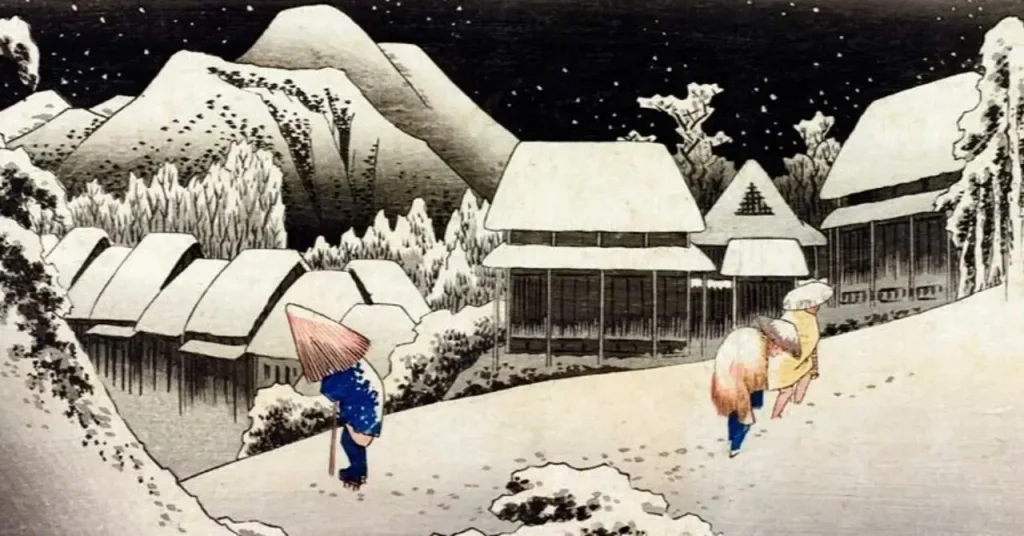 by Utagawa Hiroshige (1797-1858)
by Utagawa Hiroshige (1797-1858)
Ukiyo-e, firstly I’d like to explain the word of Ukiyo, because Ukiyo-e is literally “pictures of the floating world”, can you guess why it was said such a thing?
We put 浮き世 in Kanji (Chinese character) originally, but we also put 憂き世 (sad world) at the same time.
The source of the word, therefore, Ukiyo is the world of grief or a painful world. But during the Edo period, it has become its meaning an ephemeral world, and pictures drawn at that time has been called Ukiyo-e(picture).
How Ukiyoe Captured the Hedonistic Lifestyle of Edo Japan
At that time, however, paintings drawn by professional painters could be enjoyed only by some wealthy people in Japan due to its very expensive works, and ordinary people couldn’t afford to buy them.
However, Ukiyoe print can be sold at a cheap price of about several hundred yen (five or six dollars) with current money by mass-producing it with woodcut prints, and it has developed and spread explosively as entertainment that commoners can enjoy.
As a natural consequence, Ukiyo-e print vividly depicted aspects of popular culture of that time.
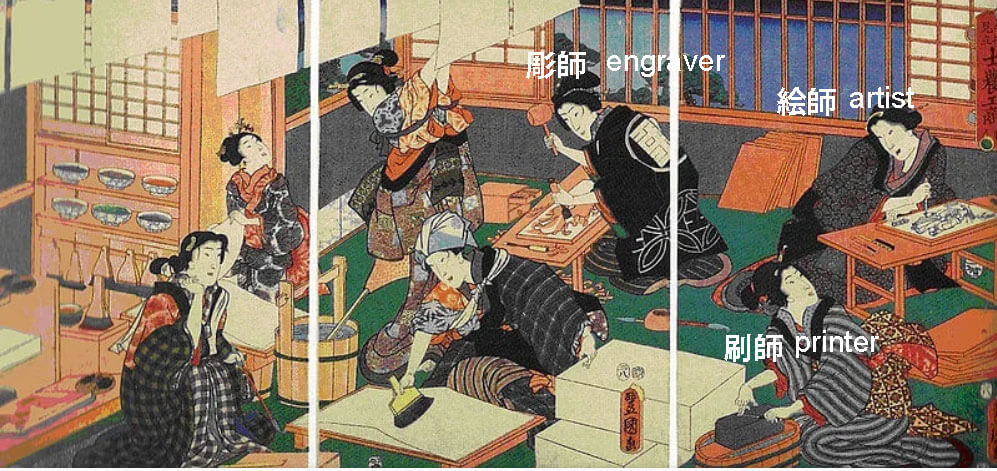 by Utagawa Kunisada (歌川国貞) (1786-1865)
by Utagawa Kunisada (歌川国貞) (1786-1865)
Some of the most famous Ukiyoe artists are Katsushika Hokusai and Utagawa Hiroshige, who created stunning prints of nature and scenery, such as The Great Wave off Kanagawa and The Fifty-three Stations of the Tōkaidō.
It was Hishikawa Moronobu (菱川師宣) (1618 – 1694) that a Japanese artist known for popularizing the ukiyo-e genre of woodblock prints and paintings in the late 17th century after the era of war was over and the world became stable.
He was originally a painter who painted illustrations of books, but gradually became popular with the content of the book, so it began to produce prints of one sheet.
Ukiyo-e came into existence in the mid-17th century. The early woodblock prints were monochromatic, black-colored prints called Sumire, simply using Indian ink.
But it was a revolutionary thing that such paintings became popular among the people.
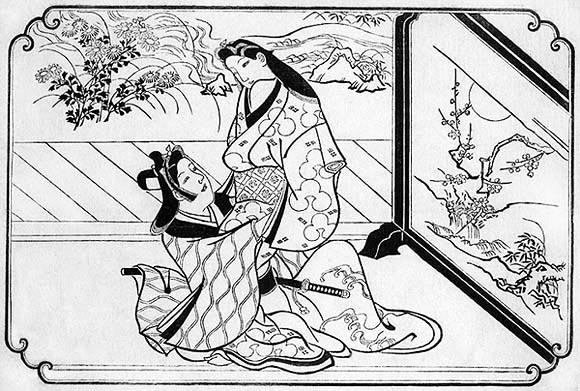
Hishikawa Moronobu‘s Woodcut, sumi ink on paper in Late 1670s–early 1680s
When ink painting begins to spread to a certain extent, printmakers tried to devise a way to add color to the picture this time.
Although attempts such as direct coloring on ink paintings were tried, it is not suitable for mass production.
What was invented there was a landmark attached to a woodblock, which makes it possible to print a color plate without misalignment of colors, so that Ukiyo-e prints of multicolored prints are at last made after many trials and errors.
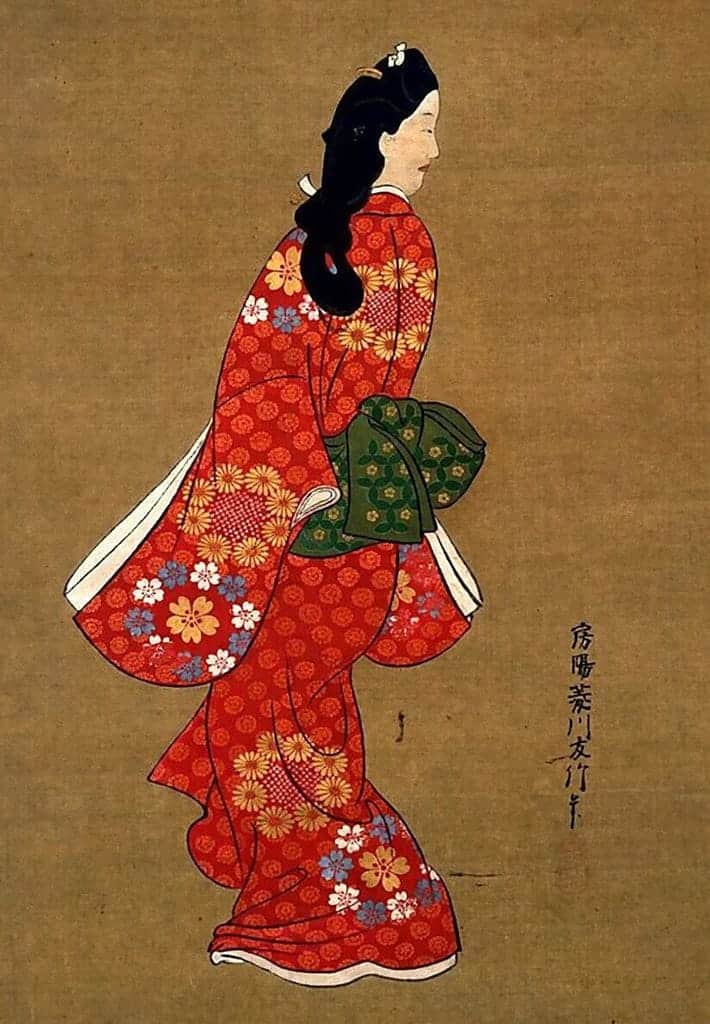
Beauty Looking Back by Hishikawa Moronobu at Tokyo National Museum
This shows a beautiful woman wearing a red garment of kimono, and caught in the moment of looking back. Hailing from Boyo, part of modern-day Chiba Prefecture.
Moronobu was originally skilled at nuihaku, a method of combining embroidery and metallic leaf, to create detailed and vivid garments.
Moronobu was admired for his beauty paintings, which were said to represent the true Edo (Tokyo) women. This painting’s signature Yuchiku, was the nom de plume Moronobu used in his later years.
Their works had a great impact on Western artists such as the Impressionists and Post-Impressionists2. Ukiyoe production declined in the late 19th century due to the social and technological changes brought by the Meiji Restoration, but it remains a unique and influential Japanese art form
Why did ukiyo-e featuring courtesans influence overseas?
The ukiyo-e prints featuring courtesans, which were highly popular within Japan, had a significant influence on Western culture, giving rise to the major boom known as “Japonisme.”
This Japonisme movement was sparked by the exhibition of ukiyo-e prints at the World Exposition held in Paris in 1867.
Western artists influenced by ukiyo-e prints featuring courtesans
Prominent artists who were influenced include Vincent van Gogh and Claude Monet.
Claude Monet’s famous work “La Japonaise” depicts his wife dressed in the attire of a courtesan.
Van Gogh, on the other hand, left behind a piece called “Oiran.”
This artwork incorporates the color and line drawing techniques that Van Gogh learned from ukiyo-e prints and applied in his own artistic style.
Ukiyo-e print; outside Japan
Ukiyo-e, widely popular among ordinary people, but over three quarters of the current Ukiyo-e that are abroad. not in Japan. Ukiyo-e, which became familiar too much, was no longer treated as a “carefully kept art painting”, so there were few people who carefully kept them for years.
Nevertheless, it is because foreigners acknowledged the value because of the fact. During the Edo era where isolation continues, when exporting pottery etc from the Netherlands to the West of the only trade destination, it was wrapped in ukiyo-e as a cushioning material. The Westerners who saw the ukiyo-e picture were surprised by their unique colors and composition.
And when a large number of Japanese craftworks and ukiyo-e prints were exhibited at the World Exposition held in Paris, France in 1867, the Japanese hobby, the so – called “japonism” boom came about.
The wave of Japonism will also spread among Western painters. Among them, Impressionist painters were particularly influenced.
Ukiyo-e became “the world ‘s UKIYOE” thanks to painters, such as Van Gogh, Claude Monet, Edgar Degas and Edouard Manet, now called masterpieces drawing motifs of Ukiyo-e prints.
Copy of ukiyo-e
Van Gogh in particular, copied ukiyo-e repeatedly to learn about vibrant colour schemes based on primary colours and also the use of bold composition.
One of examples as follows;
“The Plum Orchard“ by Utagawa Hiroshige (1797–1858), was a Japanese ukiyo-e artist, considered the last great master of that tradition.
Japonaiserie: Flowering Plum Tree (after Hiroshige), by Vincent van Gogh, 1887, “Van Gogh Museum”

Here are typical masterpieces that represent as Ukiyo-e prints
One major work of ukiyo-e was bijin-ga-portraits of beautiful women. The hallmark of these pictures is their focus on feminine beauty such as plump cheeks and voluminous hair.
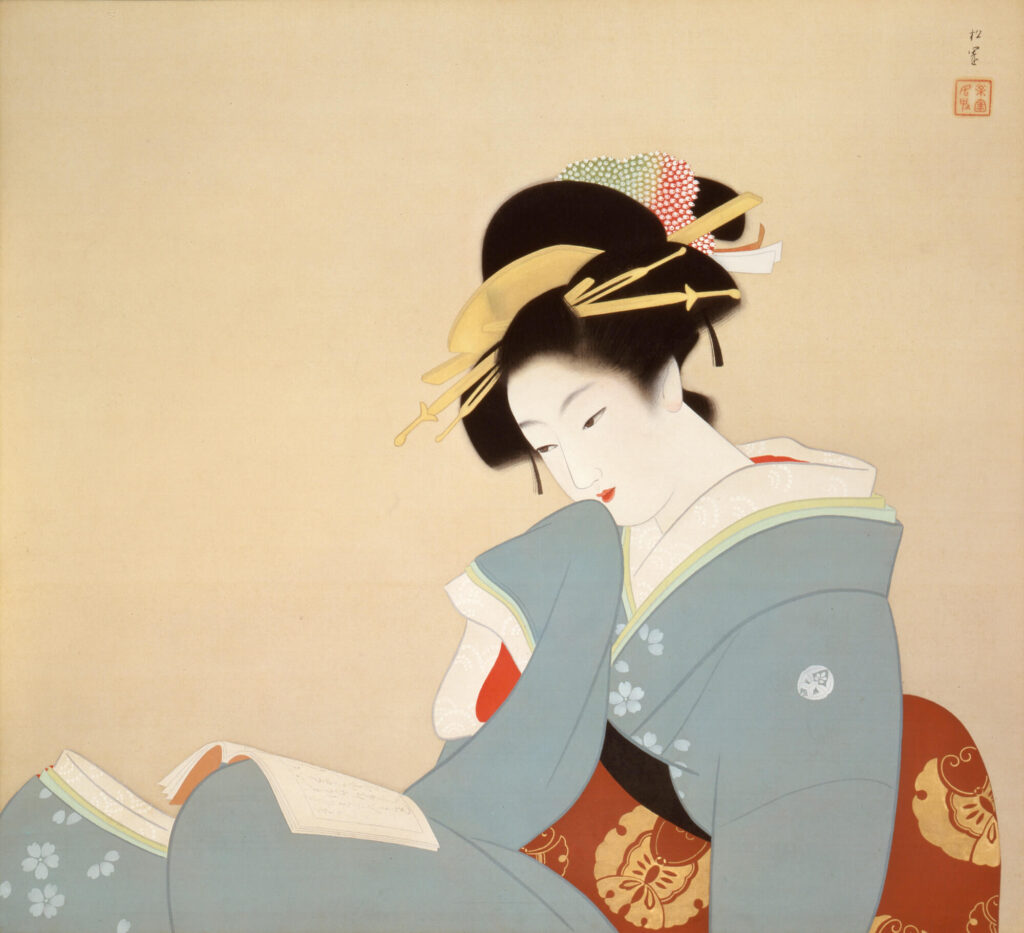
by Uemura Shoen (上村松園) (1875-1949)
Another work was yakusha-e, which depicted popular actors. These prints were the equivalent of today’s celebrity photo books and gossip magazines.
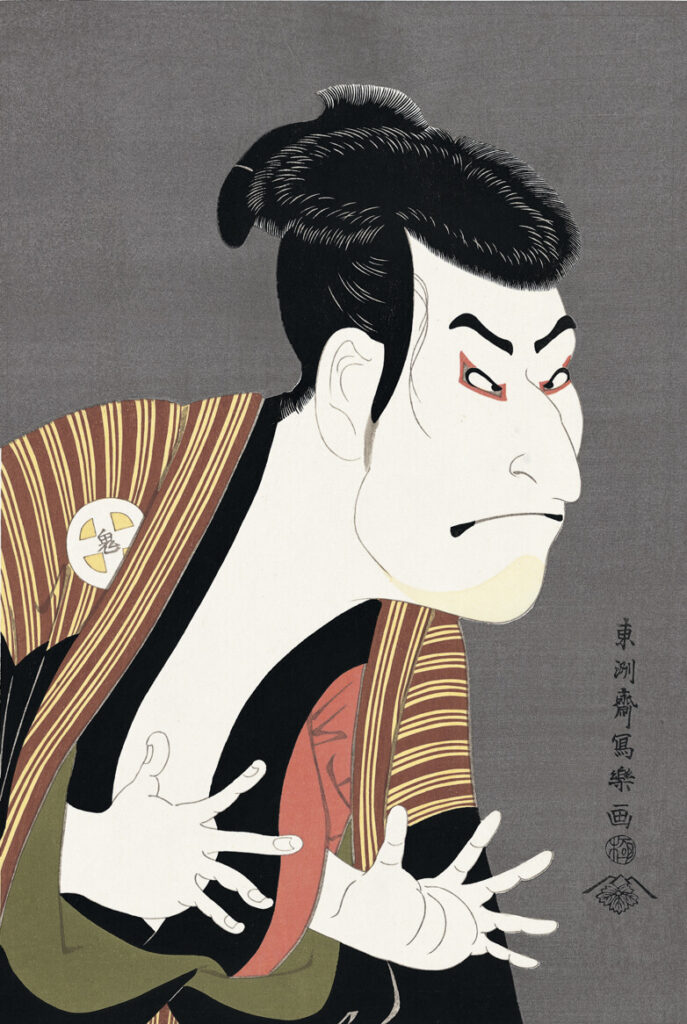
by Toushusai Sharaku (東洲斎 写楽) (active 1794-1795)
This is a series of prints by Utagawa Hiroshige titled “The 53 Stations of the Tokaido“, depicting scenes of the post stations along the highway that linked Edo(Tokyo)to Kyoto.
Serving like travel guidebooks, series like this became huge hits. People would look at the pictures showing beautiful landscapes and regional characteristics, and fantasize about actually going to those places.
Thirty-six Views of Mount Fuji is a series of landscape prints by the Japanese ukiyo-e artist Katsushika Hokusai(1760–1849). The series depicts Mount Fuji from different locations and in various seasons and weather conditions.
The series was produced from 1830 to 1832, when Hokusai was in his seventies and at the height of his career. Among the prints are three of Hokusai’s most famous: “Under the Wave off Kanagawa“ (or “The Great Wave“), the best known print in the series. The series has been described as the artist’s “indisputable colour-print masterpiece”.

by Katsushika Hokusai (葛飾北斎) (1760-1849)
Ukiyo-e prints are more that just beautiful pictures. They’re unique form of art that was once a vital part of everyday life for ordinary people.
芳年の水面GIF#浮世絵 #月岡芳年 pic.twitter.com/Dd55vNI7h8
— モシモフキヲ (@moshimofukiwo) November 25, 2015
Last but not least, “shunga (erotic art)“ should be visited, thanks

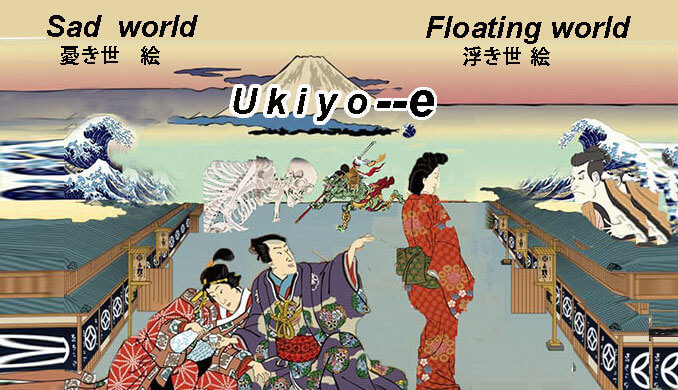
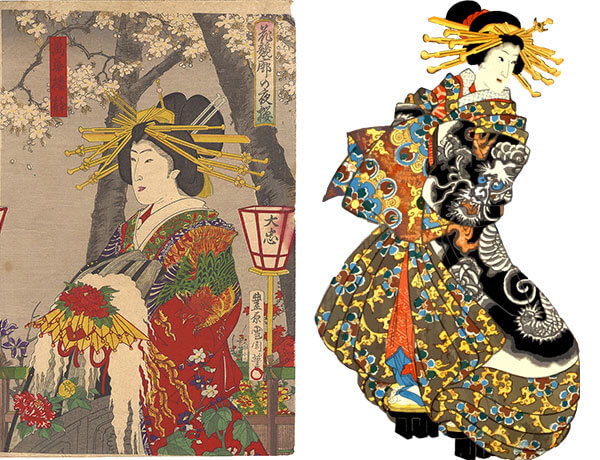



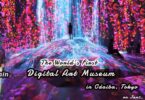
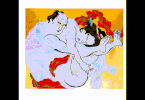
Leave a Comment